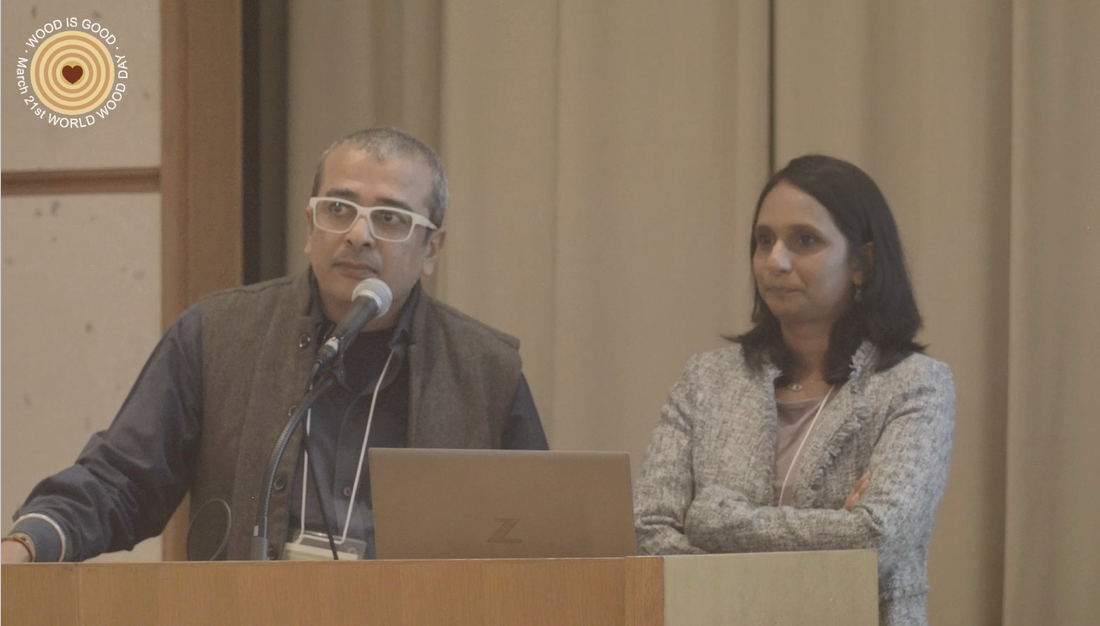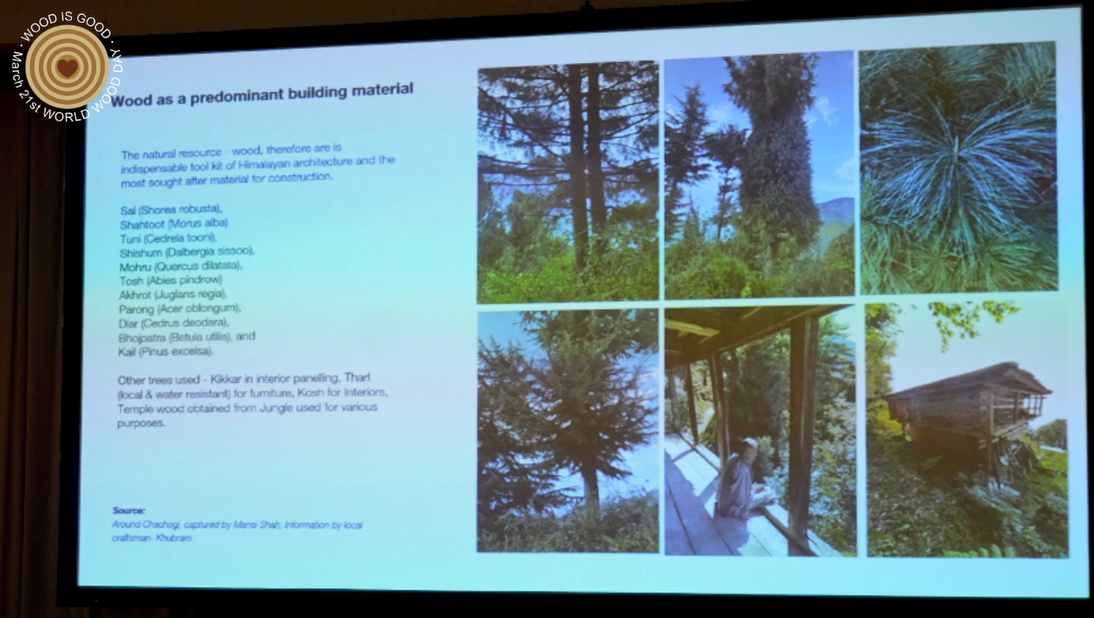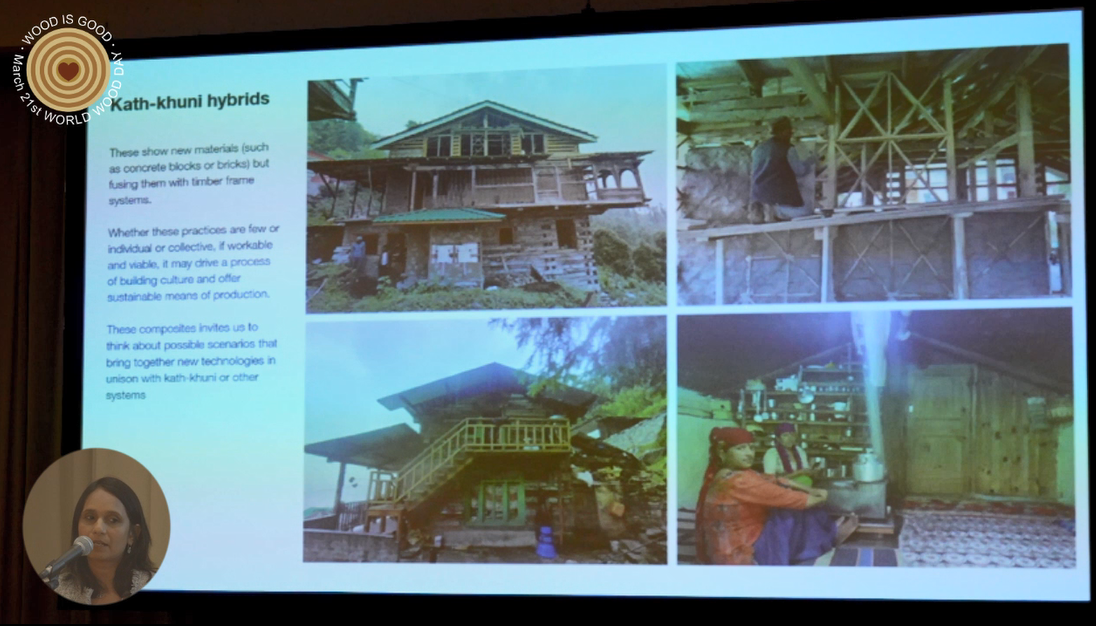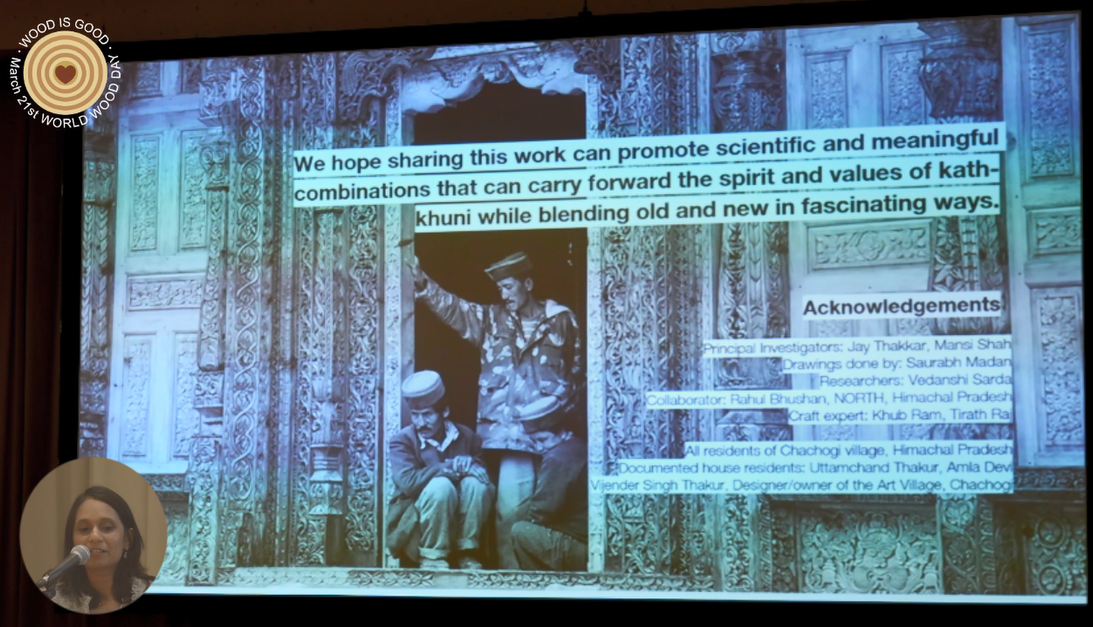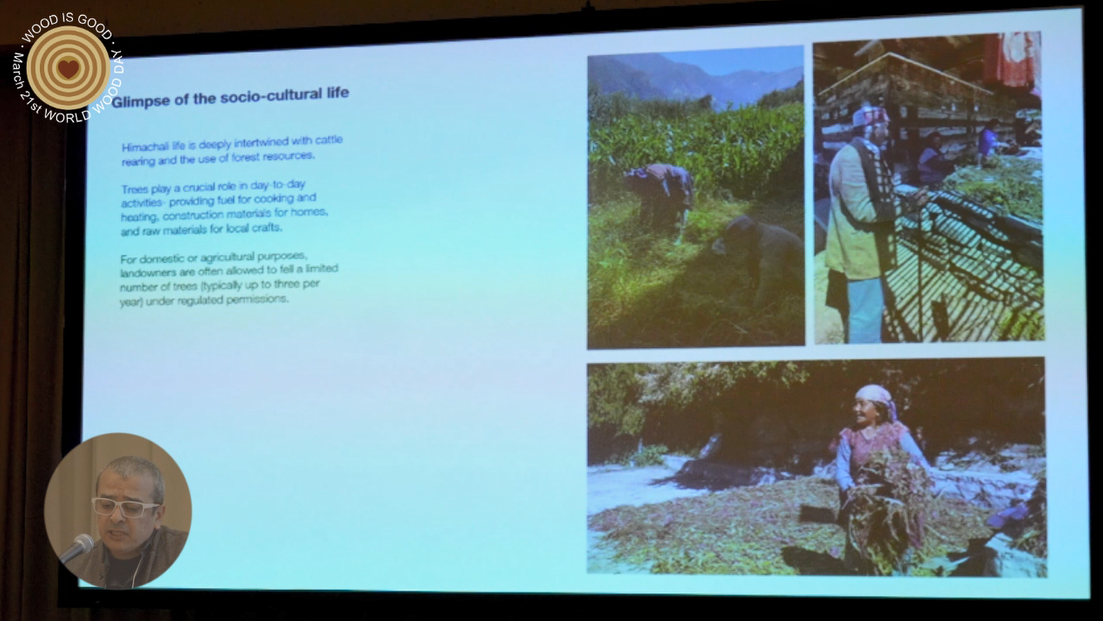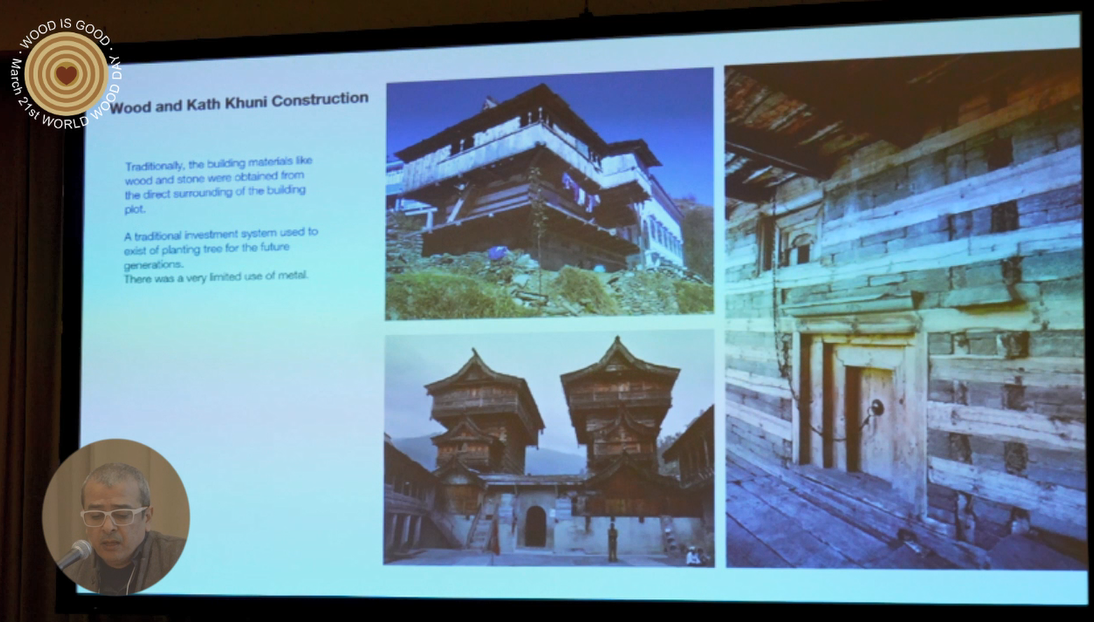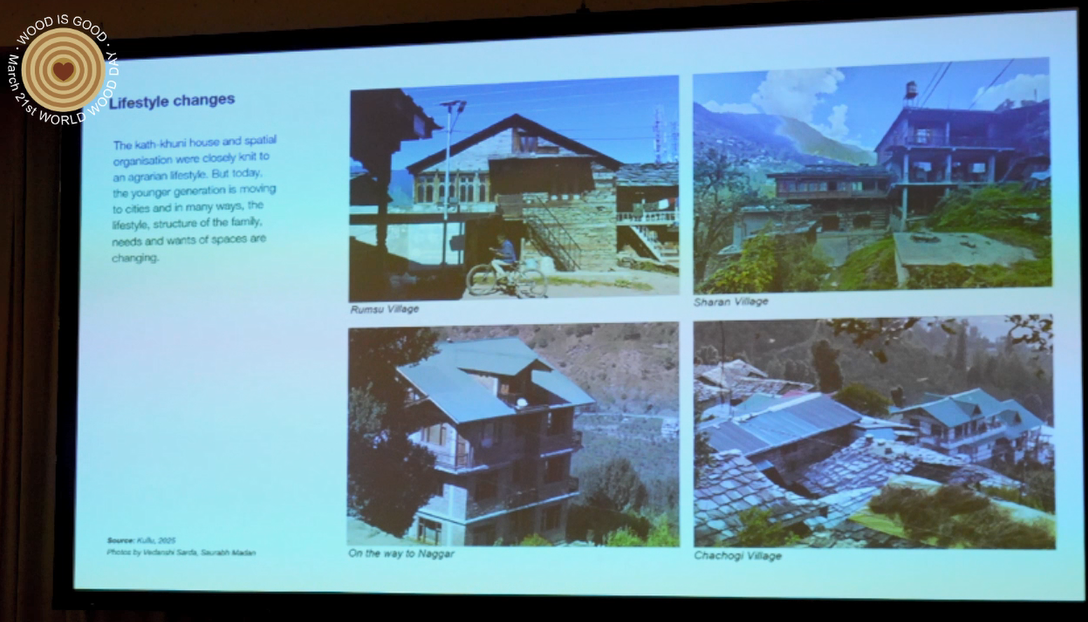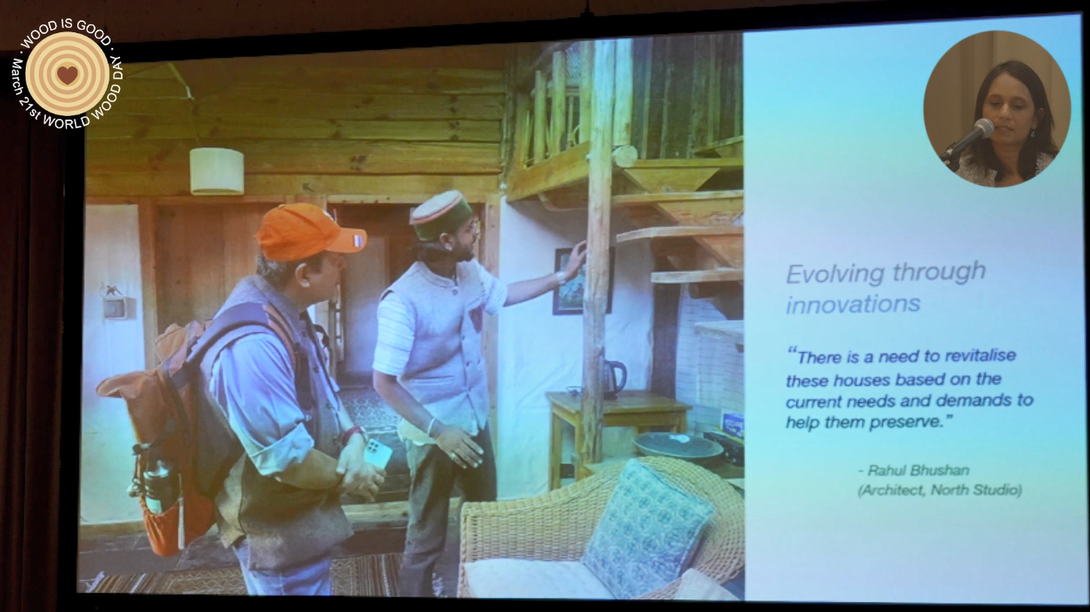报告题目:Relevance and Continuity of Wood in the Kath - khuni Architecture in the Mountainous Region of Himachal Pradesh, India
会议名称:“2025世界木材日”研讨会暨第七届国际林联(IUFRO)林产品文化研究组讨论会
会议时间:2025年3月18日
报告嘉宾:Jay Thakkar,Mansi Shah
嘉宾单位:印度CEPT大学
报告摘要:
The proposal extensively explores the profound connection between wood and culture embedded in the Kath-khuni building practice in Himachal Pradesh, India. The proposal focuses on the Naggar region of Kullu district in Himachal Pradesh. The Kath-khuni construction method employs an ingenious approach in vernacular architecture, interweaving wood and stone without needing mortar. Over centuries, this technique has evolved and refined the use of wood in imaginative ways, particularly in the intricate details of joinery and woodworking integral to the construction process, resulting in enduring and sturdy structures. The evolution of joinery systems embeds exceptional knowledge of dissipating forces during earthquakes. They also seamlessly integrate with the local climate and topography, offering a harmonious blend of durability and thermal comfort, highlighting the inherent sustainability in the Kath-khuni practices of Himachal Pradesh.
Amidst the current drive of modernisation and consequential wood scarcity has been impacting and transforming the Himalayan landscape, this proposal outlines a dual exploration. The primary focus involves unravelling the significance of wood in Kath-khuni practices, encompassing the study of construction methods, craftsmanship, sourcing practices, and connections to the environment; for example, the wood, harvested from nearby forests, holds a sacred place, emphasising sustainability and a symbiotic relationship with nature.
The second aspect delves into innovative wood usage amidst scarcity, exploring insights from architects and builders in the Naggar region. This section considers learning from ongoing practices that use core Kath-khuni principles while adapting to limited wood resources. It builds on the importance of indigenous knowledge to provide actionable insights for contemporary practices that improvise, adapt, change, and continue sustainable principles.
Ultimately, the research seeks to illuminate the vital roles that indigenous construction systems play in preserving cultural heritage and addressing environmental concerns, especially during climate change discussions. The outcomes aspire to bridge the gap between tradition and modernity, ensuring the continuity and adaptation of cultural practices, mainly using wood, which holds profound significance in Himachal Pradesh.
责任编辑:iwcs25H


 204
204